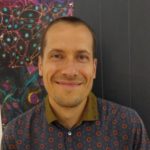Link to Pubmed [PMID] – 31481671
Link to DOI – 10.1038/s41467-019-11851-0
Nat Commun 2019 Sep; 10(1): 3969
Analyses of idealized feedforward networks suggest that several conditions have to be satisfied in order for activity to propagate faithfully across layers. Verifying these concepts experimentally has been difficult owing to the vast number of variables that must be controlled. Here, we cultured cortical neurons in a chamber with sequentially connected compartments, optogenetically stimulated individual neurons in the first layer with high spatiotemporal resolution, and then monitored the subthreshold and suprathreshold potentials in subsequent layers. Brief stimuli delivered to the first layer evoked a short-latency transient response followed by sustained activity. Rate signals, carried by the sustained component, propagated reliably through 4 layers, unlike idealized feedforward networks, which tended strongly towards synchrony. Moreover, temporal jitter in the stimulus was transformed into a rate code and transmitted to the last layer. This novel mode of propagation occurred in the balanced excitatory-inhibitory regime and is mediated by NMDA-mediated receptors and recurrent activity.

